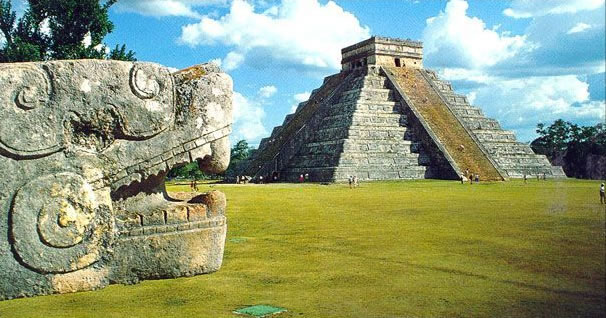 d, Guatemala and Honduras for return of 1000 year B.C. the succession of archaeological discoveries, from the passed century, more indicates the development of one of the notables civilizations of the New World, with architecture, sculpture and ceramics sufficiently elaborated. Without a doubt none, this civilization if exactly based on the knowledge of the archaic, previous cultures to century X B.C. But, it was the decipher of the ideogramas of the Mayan writing that allowed to partially reconstitute the history of this magnificent people. The history of the Mayans can be divided in three periods: the daily pay-classic (1,000 B.C. the 317 d.C.); the classic or Old Empire (up to 889 d.C.); e after classic or the New Empire (also known as “Mayan renaissance” up to 1697). Of the daily pay-classic age little if it knows, but it can affirm that, in this period, already it existed a social and religious structure as a sacerdotal classroom specialized in mathematics and astronomy. Probably, it was at this time that was created the Mayan calendar. The end of the daily pay-classic age and the start of the classic age had been established on the basis of the first dates that could have been deciphered in monuments.
d, Guatemala and Honduras for return of 1000 year B.C. the succession of archaeological discoveries, from the passed century, more indicates the development of one of the notables civilizations of the New World, with architecture, sculpture and ceramics sufficiently elaborated. Without a doubt none, this civilization if exactly based on the knowledge of the archaic, previous cultures to century X B.C. But, it was the decipher of the ideogramas of the Mayan writing that allowed to partially reconstitute the history of this magnificent people. The history of the Mayans can be divided in three periods: the daily pay-classic (1,000 B.C. the 317 d.C.); the classic or Old Empire (up to 889 d.C.); e after classic or the New Empire (also known as “Mayan renaissance” up to 1697). Of the daily pay-classic age little if it knows, but it can affirm that, in this period, already it existed a social and religious structure as a sacerdotal classroom specialized in mathematics and astronomy. Probably, it was at this time that was created the Mayan calendar. The end of the daily pay-classic age and the start of the classic age had been established on the basis of the first dates that could have been deciphered in monuments.The Ruins of Copán, the west of Honduras, had been discovered in 1570 by Diego Garci'a de Placio. One of the places most important of the Mayan civilization, these Ruins had not been excavated until century XIX. Its ortalezas and imponent public squares characterize its three main phases of development, before the city was abandoned at the beginning of century X.
The advanced knowledge that the Mayans possuíam on astronomy, as solar eclipses and movements of the planets, and on mathematics, had allowed them to create a cyclical calendar of notable precision. In the reality they are two overlapping calendars: tzolkin, of 260 days, and haab of 365 days. Haab was divided in eighteen months of twenty days, more five days free. To date the events they used the “short account”, of 256 years, or then the “long account”, that it began at the beginning of the Mayan age. They had determined with incredible exactness the lunar year, the trajectory of Venus and the solar year (365 days, 5 hours, 48 minutes and 45 seconds). They had invented a system of numeration with base 20 and had notion of number zero, which had attributed a symbol.
The Mayans used a hieroglífica writing that not yet total was deciphered. The scientists, studious of the Mayan civilization, had proven that the old ones had made many comments of the Sun, during its ticket for the zenith, in the ceremonial square of Copán. This discovery reaffirms that the Mayans had been great astronomers and that they had lived its period of esplendor enters the 900 years 250 d.C. During the solstícios and the equinoxes, the position of the Sun generates alignments special between some monuments, altars and other structures of the main square of the Mayan archaeological small farm of Copán.
Today, the valley of Copán, as other archaeological small farms, is declared Patrimony of the Humanity, protecting the center of the ceremonials of the Mayan civilization, that floreceu in Central America in the first millenium of the Christian Age.



No comments:
Post a Comment
Note: Only a member of this blog may post a comment.